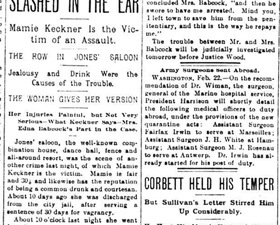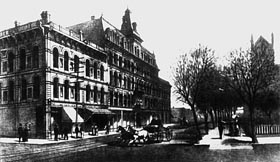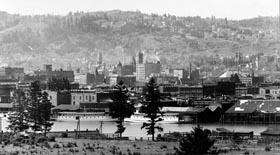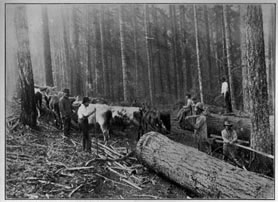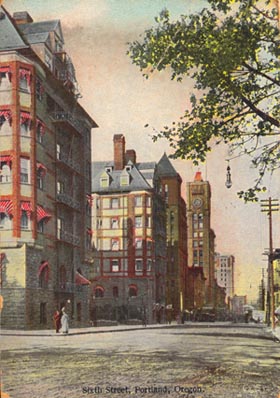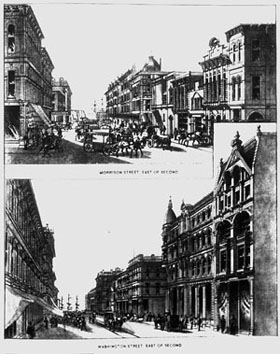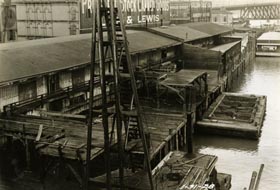
Chapter 1 | A wide-open frontier town:
The first chapter opens with a quote from the Portland Daily Telegram, Feb. 22, 1893. Here's the clipping:
PAGE 15:
Click the clipping to see a larger version of the full story.
VIDEO:
History of Trees in Portland: This video production by Friends of Trees is a little over 10 minutes long; in its first 5 minutes, it gives an excellent overview of the process of Portland's development, deforestation and partial reforestation in the 1800s.
PAGE 17:
Looking south along Third Street from Stark, toward the "respectable" part of town, in 1888. (Image: The West Shore magazine)
PAGE 17:
The Portland waterfront as seen from the east side of the river in 1898. (Image: Library of Congress)
PAGE 19:
A logging crew in the early 1870s cuts and hauls logs from a patch of timber on what today is part of downtown Portland. (Image: Joseph Gaston)
PAGE 22:
Couples stroll along the sidewalk on Sixth Avenue, deep in the "respectable" part of town, in this postcard image. The building in the foreground is the famous and fabulous Portland Hotel, which is gone today; it stood on what is now the site of Pioneer Courthouse Square. Behind it, the building with the clock tower is the Portland Morning Oregonian building. This card was postmarked 1906.
AUDIO:
Chinatown: The gambling, the girls and the opium: This is a podcast from Doug Kenck-Crispin and Andy Lindberg's "Kick Ass Oregon History" series, in which they tell the story of Portland's old Chinatown. The Chinatown we know today is in a different place; in the 1800s, Portland's Chinatown stretched along Second Street and was the home of the second largest Chinese population on the West Coast.
Also, as we'll see in Chapter 8, Portland was for a time the most important point in the U.S. for smuggling both people and opium into the country.
PAGE 24:
The view from Second Street to the waterfront along Morrison and Washington streets in 1888. (Image: The West Shore magazine)
PAGE 25:
The wharves along the Portland waterfront in the late 1920s, shortly before they were destroyed and replaced with the seawall. (Image: City of Portland Archives)
